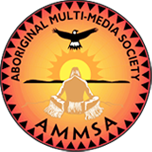Article Origin
Volume
Issue
Year
Page 23
THE URBANE INDIAN
Cultural appropriation in the arts has been a bug-a-boo in many a bonnet for the last 15 years or so. The idea that somebody from one culture should be allowed to tell the story of another culture has been discussed, argued, and fought over on a number of occasions. The argument drifts from whether non-Native people should be allowed to write Native stories to whether men should write about female concerns. Should heterosexuals write about the gay experience? Should dog people write about cat people? The demarcation line becomes blurrier than promises at closing time.
More recently, there's been a new development in the cultural appropriation discussion, right here, deep in the heart of the Native community. Renowned Cree playwright Tomson Highway is no stranger to the argument. For a long time he has been a proponent of color-blind casting and has often said art is colorless. This whole discussion annoys him to no end. In fact, several months ago at the Native Playwrights Summit in Toronto, he confessed that someday he plans to write a play in French, with three white girls as the central characters.
In January, his first main stage play in 14 years opened at the Western Theatre Company in Kamloops, B.C. Titled Ernestine Shuswap Gets Her Trout, the play takes place in Kamloops and all the major First Nations characters are Shuswap, Okanagan or Thompson.
The playwright is Cree. Is this an issue?
Somebody asked Tomson who said no, it was not an issue. He had direct consultation with the local Aboriginal cultural centre to keep him honest.
Several months back, I was approached by a Toronto Native theatrical organization interested in doing something different. The artistic director asked me if I would be interested in adapting a Tlingit creation story-How The Raven Stole The Sun-into a dance theatre piece. I'm an Ojibway from the wilds of central Ontario. Truth be told, I know very little about the Tlingit, other than they are located along the northern coast of B.C. in the Yukon and Alaska. I also know there's probably some salmon involved somewhere.
I asked the A.D., who is also Ojibway, if my being so would be an issue. Would we have hordes of politically correct Tlingit storming the production offices? The A.D. didn't think so. We were both Native, he argued. We were sensitive to the mistakes that could be made. And we had the blessing of the original author herself. But a Tlingit writer/actress/storyteller that was at the Native Playwright's Summit questioned this. "Why not get a Tlingit writer to do it? Hire me. What's their number?"
In my own and Tomson's defence, there is an understanding that exists between the First Nations of Canada, regardless of what part of the country or Nation they are from. It's something akin to a sense of shared experiences, born of oppression, of survival, of disenfranchisement, of too much baloney (both in a literal and metaphorical sense). I believe this allows us to relate to each other's existence, regardless of individual tribalism.
My very first writing assignment, a thousand years ago, was for an episode of The Beachcombers. There I was, writing a story about Jesse Jim and his wife Laurel, two of the Native characters in the show. They were Salish, if I remember correctly. I am not. I had also never been to British Columbia at that point. But in the end, the episode turned out pretty good and I managed not to culturally embarrass myself.
I was also once a writer on North Of 60, a show about the Dene of the Northwest Territories. Again, at the sound of being repetitious, I was not Dene. One Dene critic of the show was once quoted as saying "It's a show about my people written by Jews and Crees." And, I guess, unbeknownst to him, one lone Ojibway.
It seems that when you're writing a script for television, the specifics of your nation become irrelevant. Non-Native producers only seem to care that you can wave around a status card and can tellthe difference between a bagel and some bannock.
Ojibways can write about the Dene or whoever. The Haida can write about the Innu. I can even write about white people if I've got the inclination. Hey, I've been known to throw a few caucasians into my scripts, just for lack of color, and to find out if anybody would accuse me of culturally appropriating Oshawa culture.
But ears prick up in our own community, when we Native writers start looking over the fence at other First Nations stories.
One woman on my reserve was a little uncomfortable with the idea of my adapting the creation story, but then shook it off saying "Well, at least you, being the writer, will be Native. That's something." Maybe it is something. Maybe it's nothing. It is a question for those far more intelligent than I am. In the meantime, I've got an idea for a story about a handicapped black albino lesbian from South Africa... but it's okay, her car has a dreamcatcher hanging from her rearview mirror.
- 1897 views
